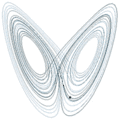Template:Selected anniversaries/February 6: Difference between revisions
No edit summary |
No edit summary |
||
| Line 1: | Line 1: | ||
<gallery> | <gallery> | ||
||1465 – Scipione del Ferro, Italian mathematician and theorist (d. 1526) | |||
|File:English Lottery 1566 Scroll.jpg|link=Lottery (nonfiction)|1570: New method for predicting [[Lottery (nonfiction)|lottery winners]] exploits faulty [[Gnomon algorithm function]]. | |File:English Lottery 1566 Scroll.jpg|link=Lottery (nonfiction)|1570: New method for predicting [[Lottery (nonfiction)|lottery winners]] exploits faulty [[Gnomon algorithm function]]. | ||
File:Mario Bettinus.jpg|link=Mario Bettinus (nonfiction)|1582: Mathematician, astronomer, and philosopher [[Mario Bettinus (nonfiction)|Mario Bettinus]] born. He will write ''Apiaria Universae Philosophiae Mathematicae'', an encyclopedic collection of mathematical curiosities. | File:Mario Bettinus.jpg|link=Mario Bettinus (nonfiction)|1582: Mathematician, astronomer, and philosopher [[Mario Bettinus (nonfiction)|Mario Bettinus]] born. He will write ''Apiaria Universae Philosophiae Mathematicae'', an encyclopedic collection of mathematical curiosities. | ||
||1612 – Antoine Arnauld, French mathematician, theologian, and philosopher (d. 1694) | |||
||1612 – Christopher Clavius, German mathematician and astronomer (b. 1538) | |||
File:Pierre Gassendi.jpg|link=Pierre Gassendi (nonfiction)|1614: Mathematician, astronomer, philosopher, and priest [[Pierre Gassendi (nonfiction)|Pierre Gassendi]] uses [[Gnomon algorithm]] techniques to investigate the possibility of certain knowledge. | File:Pierre Gassendi.jpg|link=Pierre Gassendi (nonfiction)|1614: Mathematician, astronomer, philosopher, and priest [[Pierre Gassendi (nonfiction)|Pierre Gassendi]] uses [[Gnomon algorithm]] techniques to investigate the possibility of certain knowledge. | ||
||1695 – Nicolaus II Bernoulli, Swiss-Russian mathematician and theorist (d. 1726) | |||
||1802 – Charles Wheatstone, English-French physicist and cryptographer (d. 1875) | |||
File:Joseph Priestley.jpg|link=Joseph Priestley (nonfiction)|1804: British scientist [[Joseph Priestley (nonfiction)|Joseph Priestley]] dies. He is historically credited with the discovery of oxygen, having isolated it in its gaseous state, but his determination to defend phlogiston theory and to reject what would become the chemical revolution left him isolated within the scientific community. | File:Joseph Priestley.jpg|link=Joseph Priestley (nonfiction)|1804: British scientist [[Joseph Priestley (nonfiction)|Joseph Priestley]] dies. He is historically credited with the discovery of oxygen, having isolated it in its gaseous state, but his determination to defend phlogiston theory and to reject what would become the chemical revolution left him isolated within the scientific community. | ||
||1861 – Nikolay Zelinsky, Russian chemist and academic (d. 1953) | |||
||Eldridge Reeves Johnson (b. February 6, 1867) was an American businessman and engineer who founded the Victor Talking Machine Company and built it into the leading American producer of phonographs and phonograph records and one of the leading phonograph companies in the world at the time. | |||
||1872 – Robert Maillart, Swiss engineer, designed the Salginatobel Bridge and Schwandbach Bridge (d. 1940) | |||
||1879 – Carl Ramsauer, German physicist and author (d. 1955) | |||
||1908 – Edward Lansdale, American general and CIA agent (d. 1987) | |||
||1910 – Roman Czerniawski, Polish air force officer and spy (d. 1985) | |||
||1910 – Carlos Marcello, Tunisian-American gangster (d. 1993) | |||
||1916 – John Crank, English mathematician and physicist (d. 2006) | |||
||1927 – Gerard K. O'Neill, American physicist and astronomer (d. 1992) | |||
||1938: Crash of semi-rigid airship SSSR-V6 OSOAVIAKhIM. | ||1938: Crash of semi-rigid airship SSSR-V6 OSOAVIAKhIM. | ||
File:Mk15 nuclear bomb.jpg|link=1958 Tybee Island mid-air collision (nonfiction)|1958: Air Force and Navy personnel begin search for [[1958 Tybee Island mid-air collision (nonfiction)|hydrogen bomb known as the Tybee Bomb, which was lost in an accident the day before]]. | File:Mk15 nuclear bomb.jpg|link=1958 Tybee Island mid-air collision (nonfiction)|1958: Air Force and Navy personnel begin search for [[1958 Tybee Island mid-air collision (nonfiction)|hydrogen bomb known as the Tybee Bomb, which was lost in an accident the day before]]. | ||
File:Gysin and Burroughs distill Extract of Radium.jpg|link=Extract of Radium|1958: Woodward and Burroughs use [[Extract of Radium]] to predict location of the [[1958 Tybee Island mid-air collision (nonfiction)|the Tybee Bomb]]. | File:Gysin and Burroughs distill Extract of Radium.jpg|link=Extract of Radium|1958: Woodward and Burroughs use [[Extract of Radium]] to predict location of the [[1958 Tybee Island mid-air collision (nonfiction)|the Tybee Bomb]]. | ||
||1959 – Jack Kilby of Texas Instruments files the first patent for an integrated circuit. | |||
File:Lorenz_attractor_trajectory-through-phase-space.gif|link=Lorenz system (nonfiction)|1989: [[Lorenz system (nonfiction)|Lorenz system]] exposed to [[Extract of Radium]], develops [[Wumpus-compass]] syndrome. | File:Lorenz_attractor_trajectory-through-phase-space.gif|link=Lorenz system (nonfiction)|1989: [[Lorenz system (nonfiction)|Lorenz system]] exposed to [[Extract of Radium]], develops [[Wumpus-compass]] syndrome. | ||
||1991 – Salvador Luria, Italian biologist and physician, Nobel Prize laureate (b. 1912) | |||
||2002 – Max Perutz, Austrian-English biologist and academic, Nobel Prize laureate (b. 1914) | |||
</gallery> | </gallery> | ||
Revision as of 14:21, 29 October 2017
1582: Mathematician, astronomer, and philosopher Mario Bettinus born. He will write Apiaria Universae Philosophiae Mathematicae, an encyclopedic collection of mathematical curiosities.
1614: Mathematician, astronomer, philosopher, and priest Pierre Gassendi uses Gnomon algorithm techniques to investigate the possibility of certain knowledge.
1804: British scientist Joseph Priestley dies. He is historically credited with the discovery of oxygen, having isolated it in its gaseous state, but his determination to defend phlogiston theory and to reject what would become the chemical revolution left him isolated within the scientific community.
1958: Air Force and Navy personnel begin search for hydrogen bomb known as the Tybee Bomb, which was lost in an accident the day before.
1958: Woodward and Burroughs use Extract of Radium to predict location of the the Tybee Bomb.
1989: Lorenz system exposed to Extract of Radium, develops Wumpus-compass syndrome.





